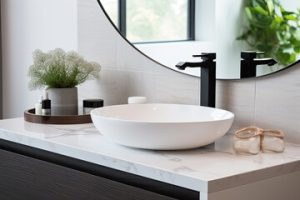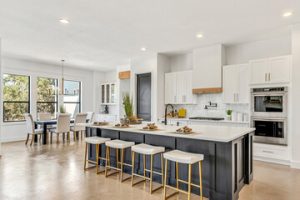Paul’s Rubbish Removal and Demolition may seem like simple tasks on the surface. They appear as mere acts of clearing debris or tearing down structures. Yet beneath these physical processes lies a rapidly evolving industry that shapes the way societies build, rebuild, and sustain their environments. As cities expand and technology advances, the future of removal and demolition is becoming far more complex and strategic than many realize.

The modern world produces waste at a rate unimaginable a century ago. Buildings, infrastructure, and consumer products all eventually reach the end of their life cycles. Rubbish removal is no longer just about transporting waste to a landfill; it has become a highly organized system that involves sorting, recycling, and resource recovery. Demolition, too, is shifting from brute-force destruction to precision dismantling aimed at maximizing material reuse.
The traditional image of demolition involves heavy machinery and clouds of dust. But new methods are changing how structures are taken apart. Controlled deconstruction techniques now allow teams to salvage valuable components and reduce environmental impact. Instead of destroying everything, they carefully extract metals, wood, and fixtures for reuse, transforming waste into new resources.
This shift reflects a broader societal change toward sustainability. With growing awareness of environmental limits, both removal and demolition now emphasize resource conservation. Old concrete can be crushed and repurposed for new construction projects. Metals can be melted and reformed into new products, and even bricks can be cleaned and reused.
Advanced technology is also redefining the industry. Robotic demolition systems can operate in hazardous environments where human workers cannot safely go. Drones provide real-time aerial analysis of sites, improving safety and efficiency. Automated sorting facilities separate recyclable materials with high precision, reducing contamination and increasing recovery rates.
These innovations are not just about efficiency; they also influence safety. Traditional demolition methods carry significant risks, including structural collapse, airborne contaminants, and accidents. Modern equipment and techniques drastically reduce these dangers. Remote-controlled machinery, predictive analytics, and safer handling procedures make job sites far less hazardous.
The economics of rubbish removal and demolition are changing too. What was once a cost center is now becoming a source of revenue. Salvaged materials have market value, and recycled components can offset the cost of new production. Companies and communities are recognizing the financial benefits of treating waste as a resource rather than a burden.
Urban redevelopment is another factor driving innovation in demolition. As cities strive to modernize, they face the challenge of clearing old infrastructure without disrupting daily life. Selective demolition, where only specific sections of a structure are removed, is becoming more common. This approach allows for upgrades and expansions without requiring complete teardown.
In many cases, demolition is not just about removing what is old but also preparing for what comes next. The cleared land becomes the foundation for future development, whether residential, commercial, or industrial. How efficiently and cleanly a site is prepared can significantly impact the speed and cost of new construction projects.
Waste generated by demolition poses unique challenges compared to everyday rubbish. It is often bulky, heavy, and difficult to transport. Specialized vehicles, sorting equipment, and disposal facilities are required to handle it effectively. These logistical complexities add layers of planning and coordination to every project.
Environmental regulations are increasingly shaping how removal and demolition are performed. Strict rules govern the disposal of hazardous materials such as asbestos, lead, and certain chemicals. Compliance requires careful inspection, specialized handling procedures, and certified disposal methods. Failure to meet these standards can result in significant legal and financial penalties.
The industry is also playing a crucial role in climate change mitigation. Recycling building materials reduces the demand for virgin resources and lowers greenhouse gas emissions associated with mining and manufacturing. Demolition projects that prioritize material recovery contribute to circular economies, where waste is continuously reintegrated into production cycles.
Public perception is evolving too. Communities are more conscious of how demolition and waste removal affect their surroundings. Noise, dust, and traffic disruptions are no longer tolerated as inevitable nuisances. Companies are responding with quieter machinery, dust suppression systems, and more transparent communication with local residents.
The rise of modular construction is influencing how demolition is approached. Buildings designed for disassembly can be taken apart more easily and efficiently at the end of their life cycle. This concept, known as design for deconstruction, anticipates future demolition needs during the initial planning phase. It represents a fundamental shift from reactive to proactive waste management.
Digital technology is pushing these changes even further. Building information modeling allows demolition teams to understand the structure’s composition before a single wall comes down. Data analytics optimize waste collection routes, reducing fuel consumption and emissions. These tools enhance precision, reduce costs, and make projects more sustainable.
There is also a growing focus on the social impact of demolition and rubbish removal. Abandoned buildings and neglected waste sites often contribute to urban decay. Their removal can revitalize neighborhoods, reduce crime, and improve public health. Well-managed projects not only clear physical space but also create opportunities for economic and social renewal.
Global resource scarcity is another force shaping the industry’s future. As raw materials become more expensive and harder to extract, recovered materials from demolition sites gain strategic importance. In some cases, the value of reclaimed metals or rare materials can rival or exceed that of newly mined resources. This creates strong incentives to invest in advanced recovery techniques.
One emerging concept is the “zero waste” demolition project. The goal is to divert as much material as possible from landfills by recycling, repurposing, or reusing it. Achieving zero waste requires meticulous planning, careful deconstruction, and collaboration among multiple stakeholders. While challenging, it represents the pinnacle of sustainable demolition practice.
Education and workforce development are essential to support these changes. The industry requires skilled professionals who understand not only machinery but also environmental science, material science, and logistics. Training programs and certifications are expanding to meet this demand, creating new career pathways.
The future of rubbish removal is deeply intertwined with digital platforms. Smart waste bins equipped with sensors can signal when they need collection, optimizing routes and reducing fuel consumption. Data-driven logistics systems match removal capacity with demand, preventing overflow and inefficiency. These innovations are transforming how waste is managed on a city-wide scale.
There is also an emerging market for upcycled demolition waste. Designers and architects are incorporating reclaimed materials into new projects, giving them a second life. This approach not only reduces waste but also adds character and history to modern structures. It demonstrates how demolition can contribute directly to creative design.
Environmental justice considerations are becoming central to industry discussions. Historically, demolition sites and waste facilities were often located in disadvantaged communities. New policies aim to distribute these burdens more equitably and involve local residents in decision-making. Social responsibility is becoming as important as technical efficiency.
Looking ahead, circular economy principles will continue to guide the evolution of rubbish removal and demolition. The idea is not to simply reduce waste but to eliminate the concept of waste altogether. Every material, once considered disposable, is now seen as a potential input for new production. This paradigm shift will define how cities grow and how industries operate in the decades to come.
The intersection of demolition and renewable energy is another emerging frontier. Old structures are being repurposed into sites for solar arrays, wind turbines, or battery storage facilities. Rubbish from these demolitions is processed and reused in the construction of renewable infrastructure. This creates a loop where demolition directly contributes to a sustainable energy future.
The industry’s evolution is also reshaping its economic models. Instead of charging solely for removal, companies are exploring revenue-sharing arrangements based on recovered materials. These innovative contracts align financial incentives with sustainability goals, encouraging more efficient practices. They also open new business opportunities beyond traditional waste disposal.
Despite the progress, challenges remain. Illegal dumping, unregulated demolition, and inadequate recycling infrastructure still pose significant obstacles. Addressing these issues will require stronger policies, better enforcement, and public awareness campaigns. Collaboration between governments, businesses, and communities will be essential to build a truly sustainable system.
Ultimately, rubbish removal and demolition are about more than clearing space—they are about transformation. They dismantle the old to make way for the new, turning waste into opportunity and destruction into creation. They stand at the crossroads of environmental stewardship, technological innovation, and social progress. And as these industries continue to evolve, they will play a central role in shaping a cleaner, more resilient future.
In a world that increasingly values sustainability and efficiency, their importance cannot be overstated. They remind us that even in destruction, there is creation, and even in waste, there is worth. As the cycle of building and rebuilding continues, rubbish removal and demolition will remain the invisible engines driving our progress.


